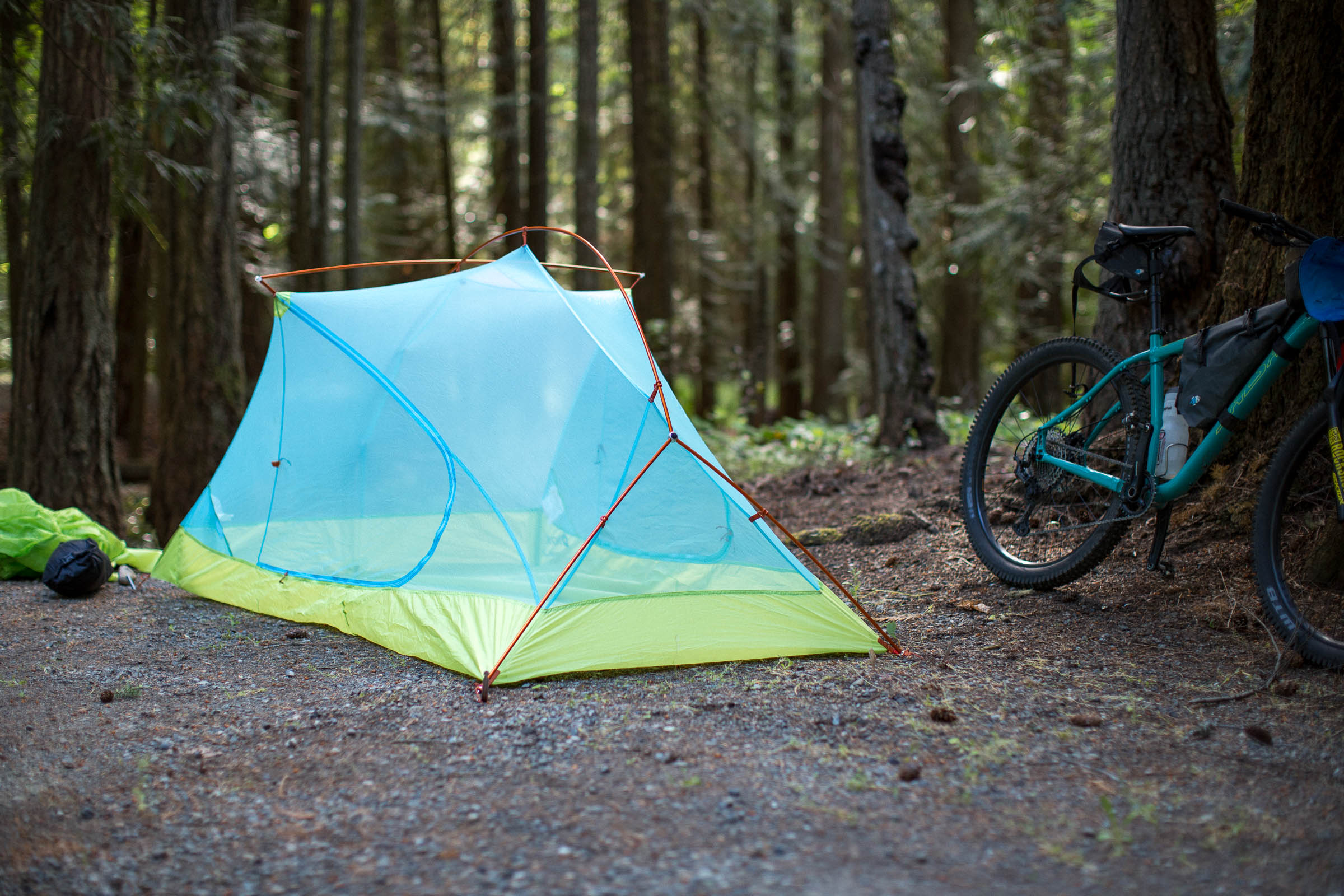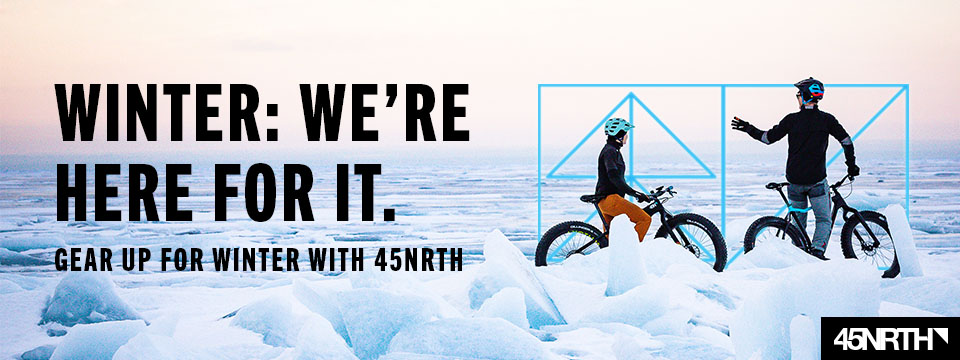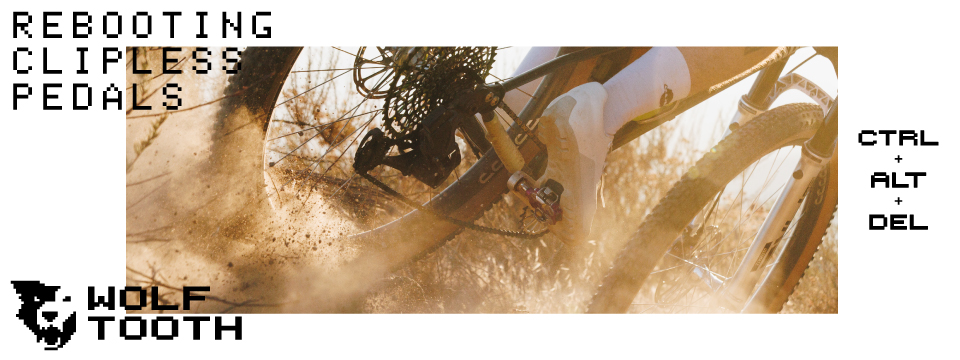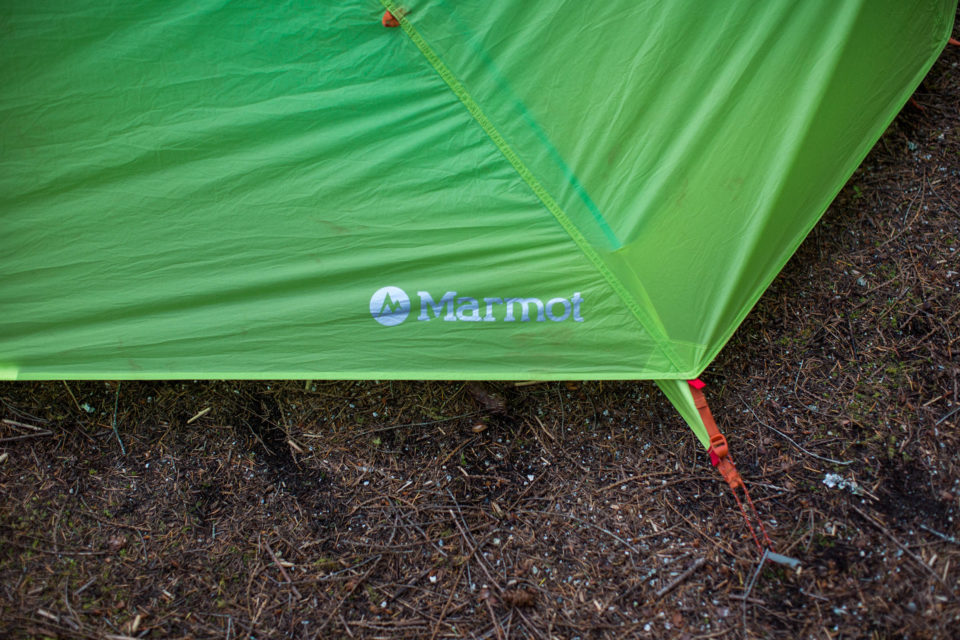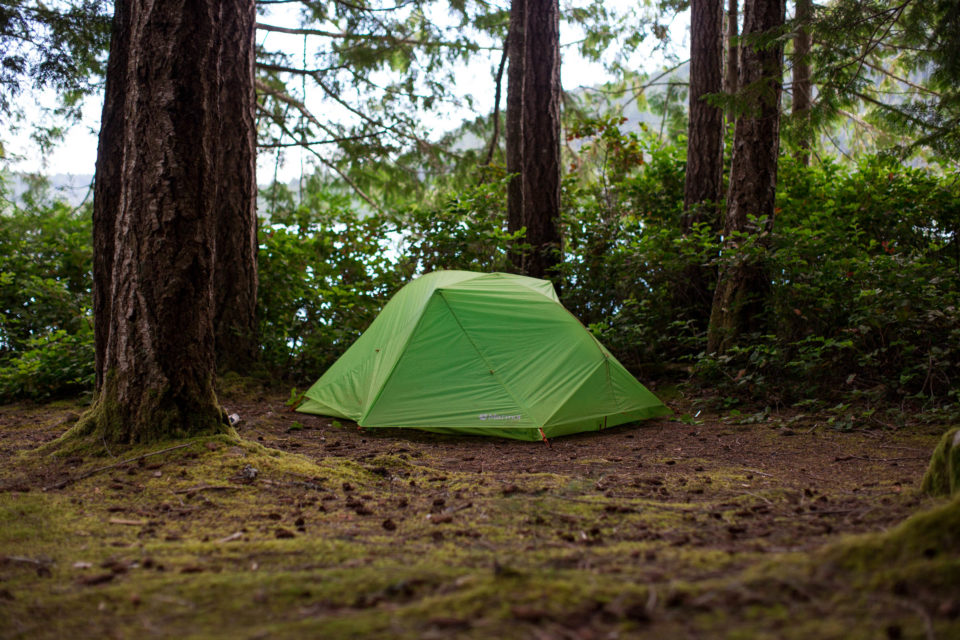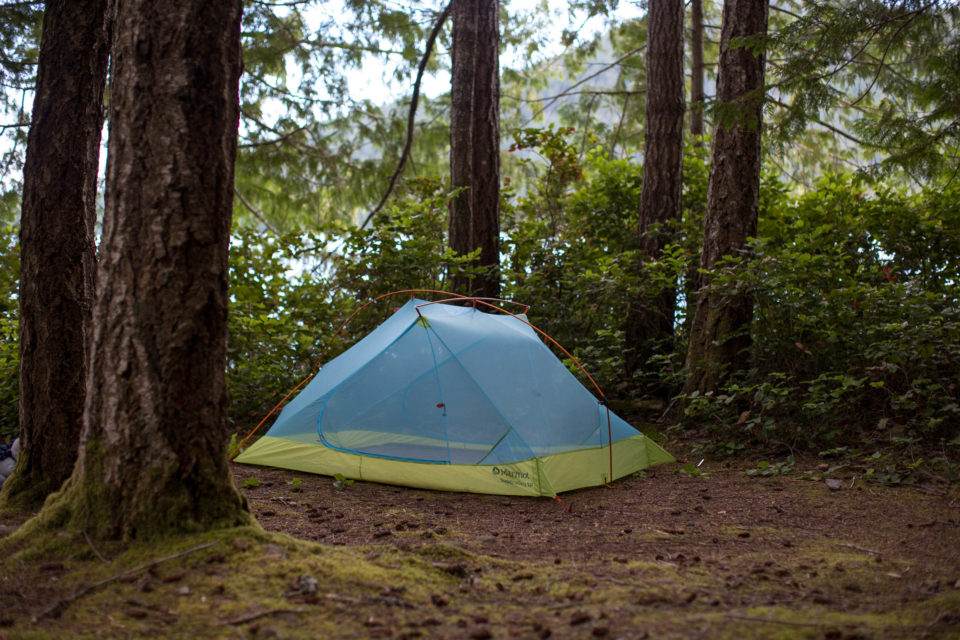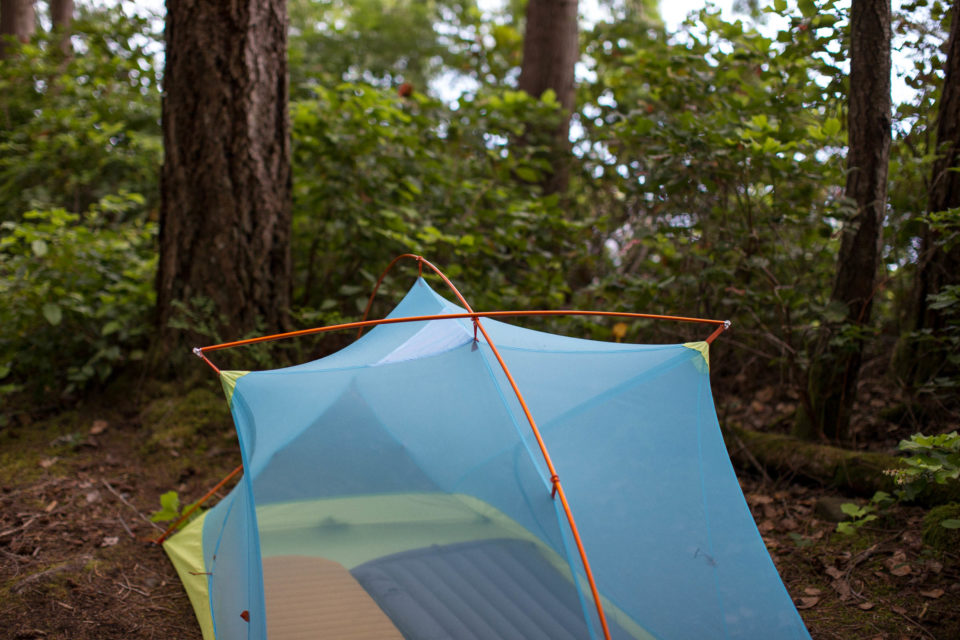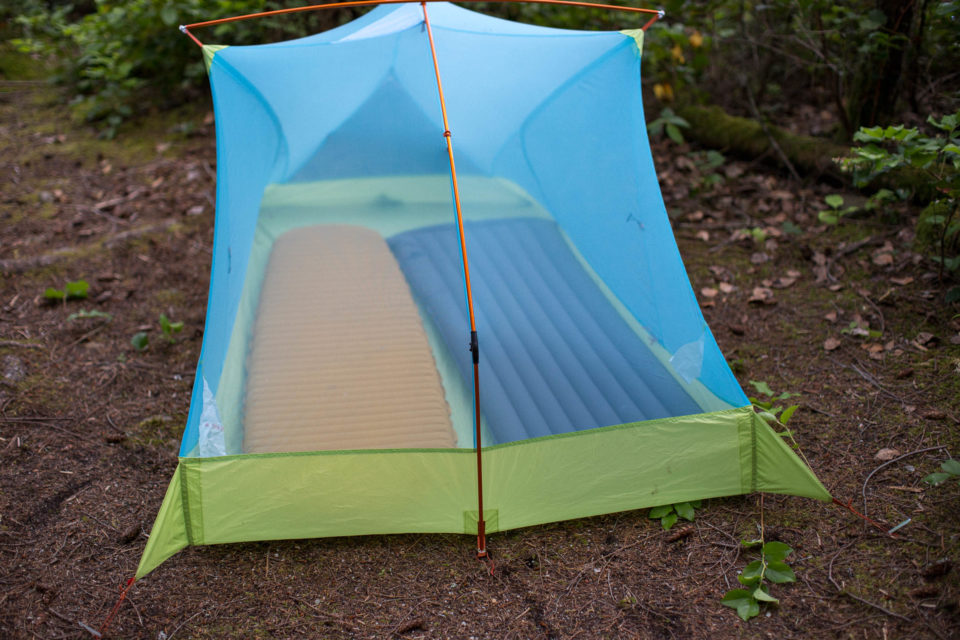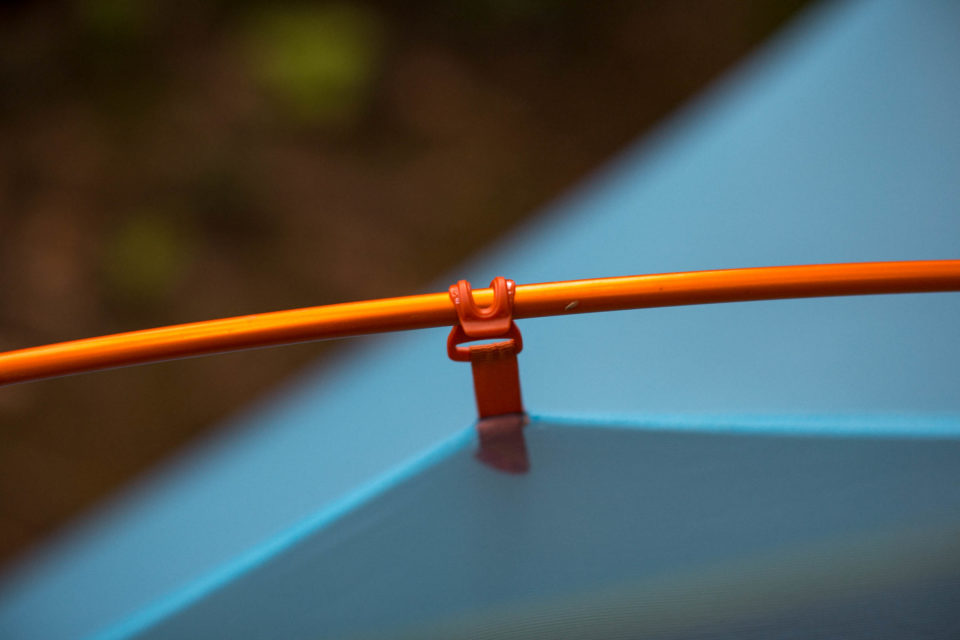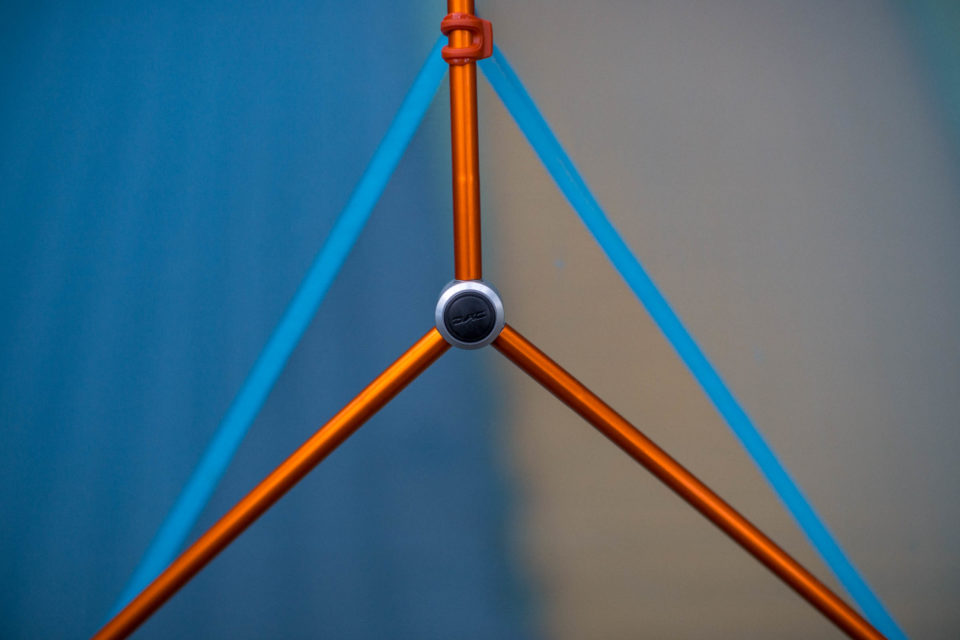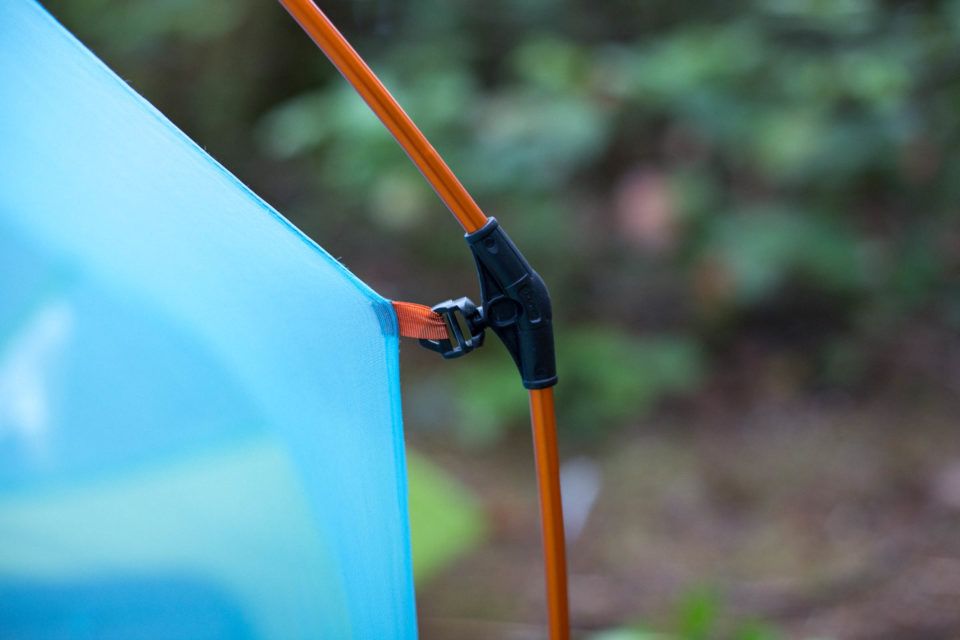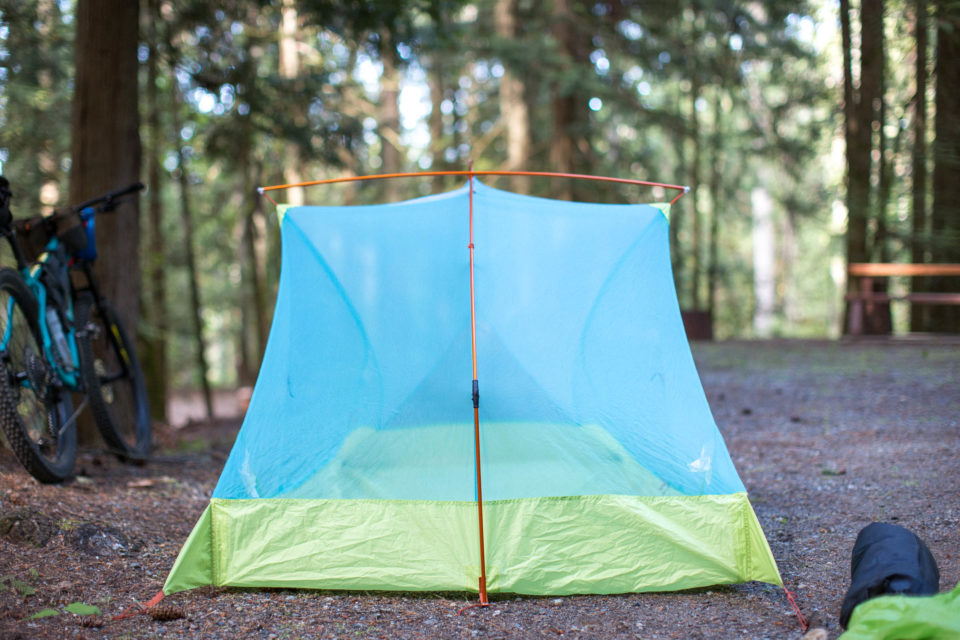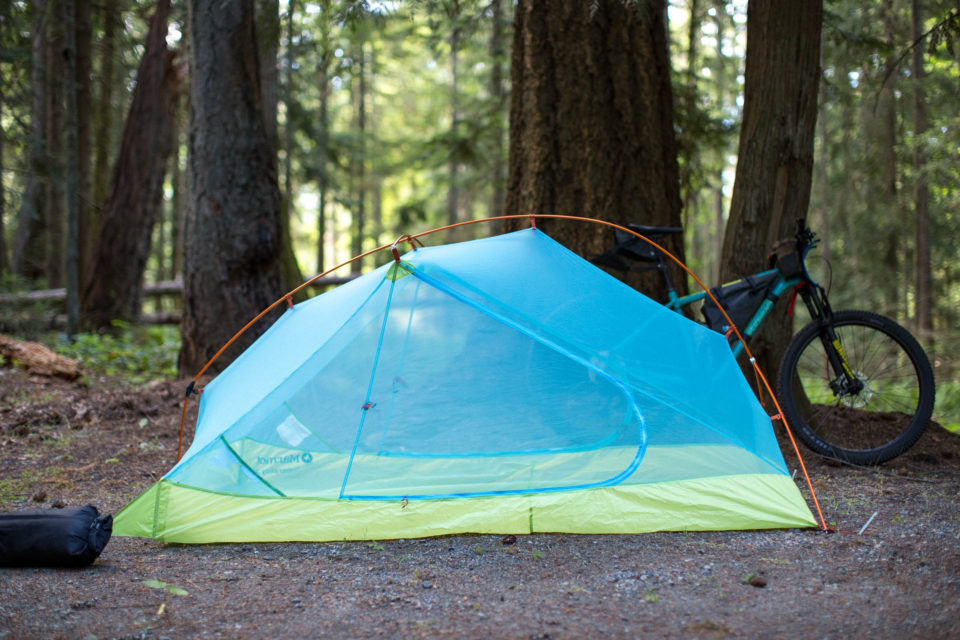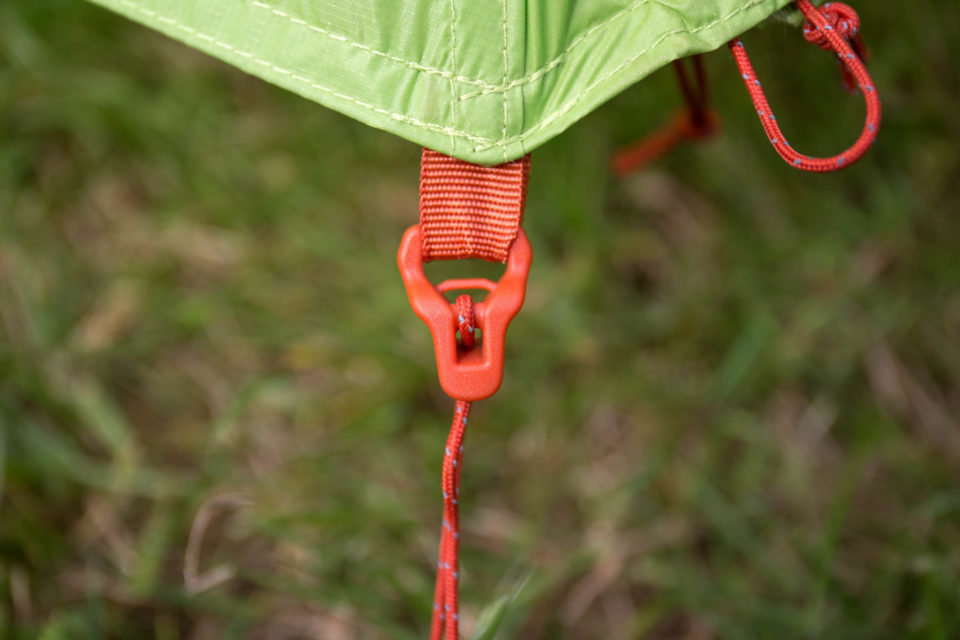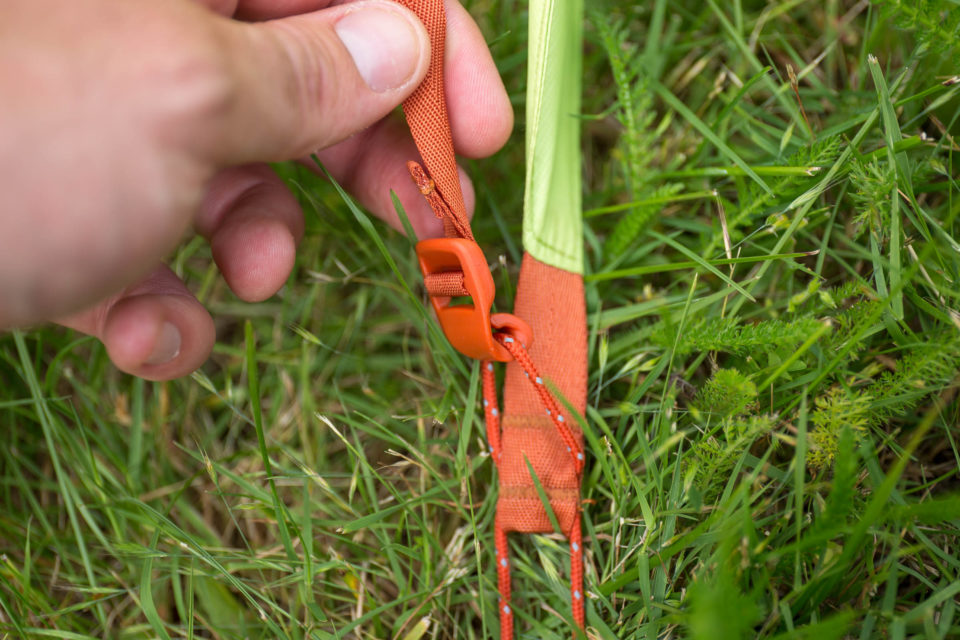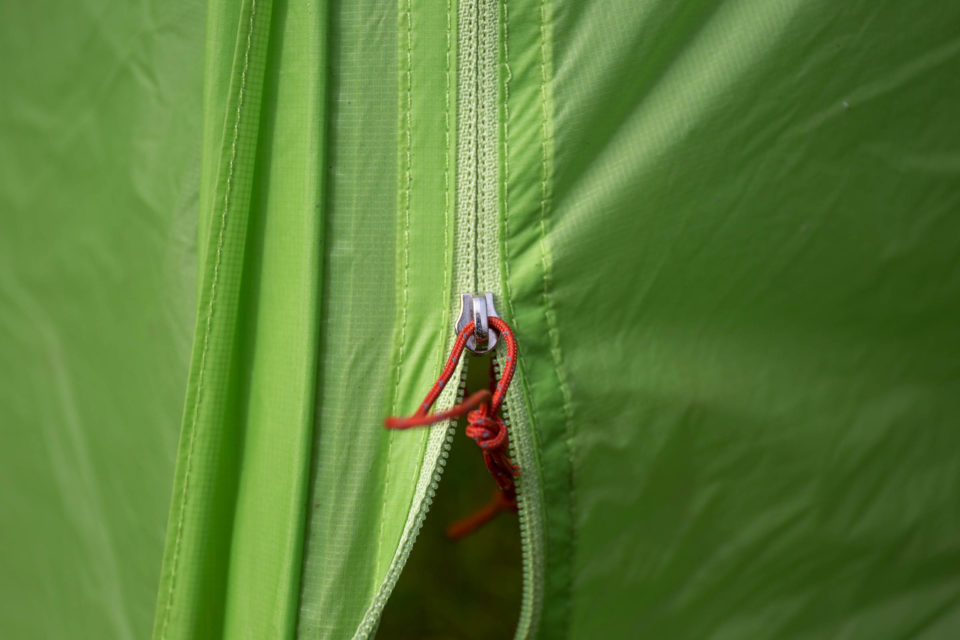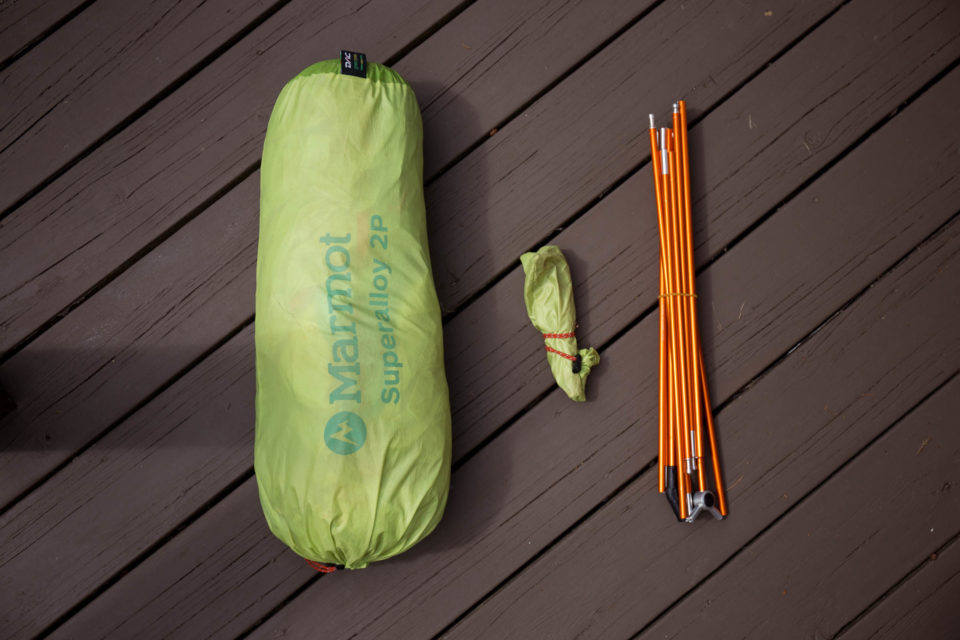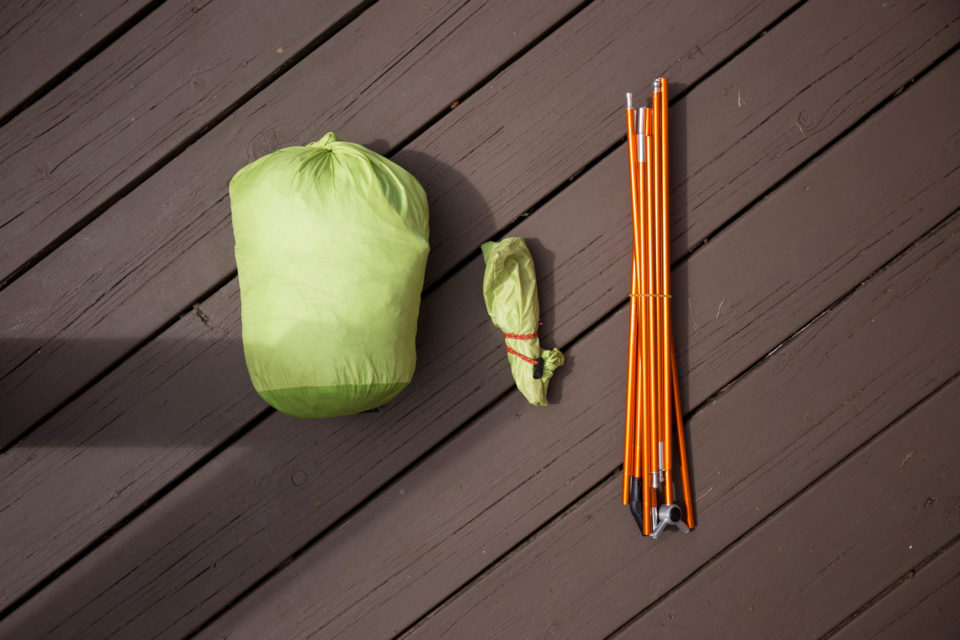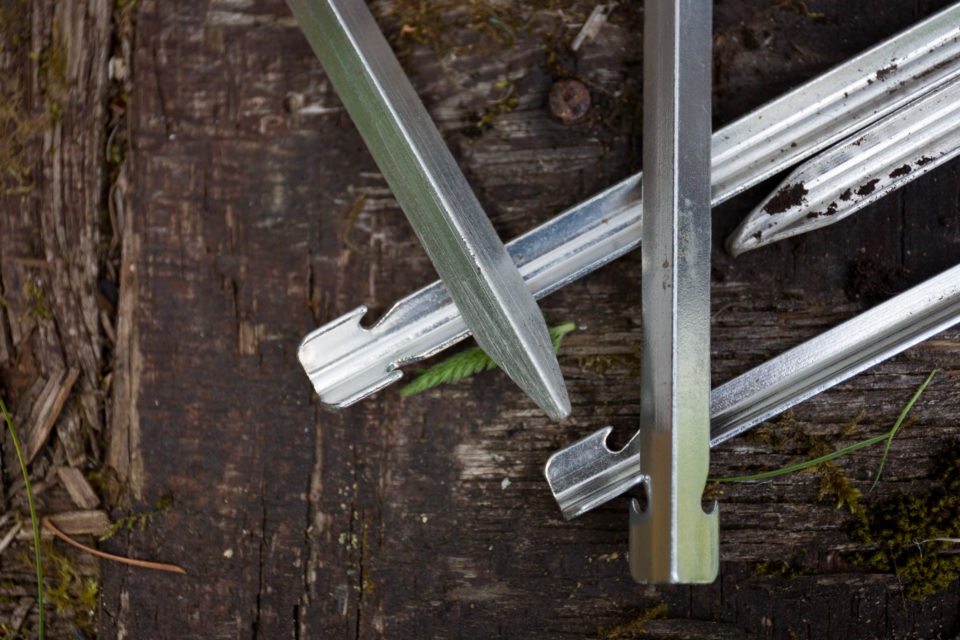Marmot Superalloy 2-Person Tent Review
Quietly released earlier this year, the Marmot Superalloy is an ultralight, two-person, semi-freestanding tent that weighs just over two pounds and doesn’t skimp on features or interior living space. We got our hands on one to test during several recent route scouting missions. Find photos, specs, and Miles’ first impressions here…
PUBLISHED Jul 2, 2020
First shown at the 2019 Outdoor Retailer trade show, the Marmot Superalloy is a new ultralight two-person tent that weights just over two pounds. Marmot has been known to produce some quality affordable camping gear and apparel, and the Superalloy is by far their lightest two-person, two-door semi-freestanding tent to date. Although it has been available for a few months now, the Superalloy tent has gone relatively unnoticed, which is somewhat surprising, considering its reasonably affordable price and impressive specs. They sent over one for us to check out, and over the last few months I’ve gotten out several overnighters and a longer bikepacking trip in Powell River, British Columbia, to get a feel for it.
Just a heads up: the Marmot Superalloy tent I was sent had been used (presumably by Marmot for testing) before I received it. It showed up with a few small holes in the tent floor, but was otherwise unscathed. I’ve taken this into consideration in my review, but wanted to point out that the noticeable signs of wear were preexisting, rather than from my time with it.
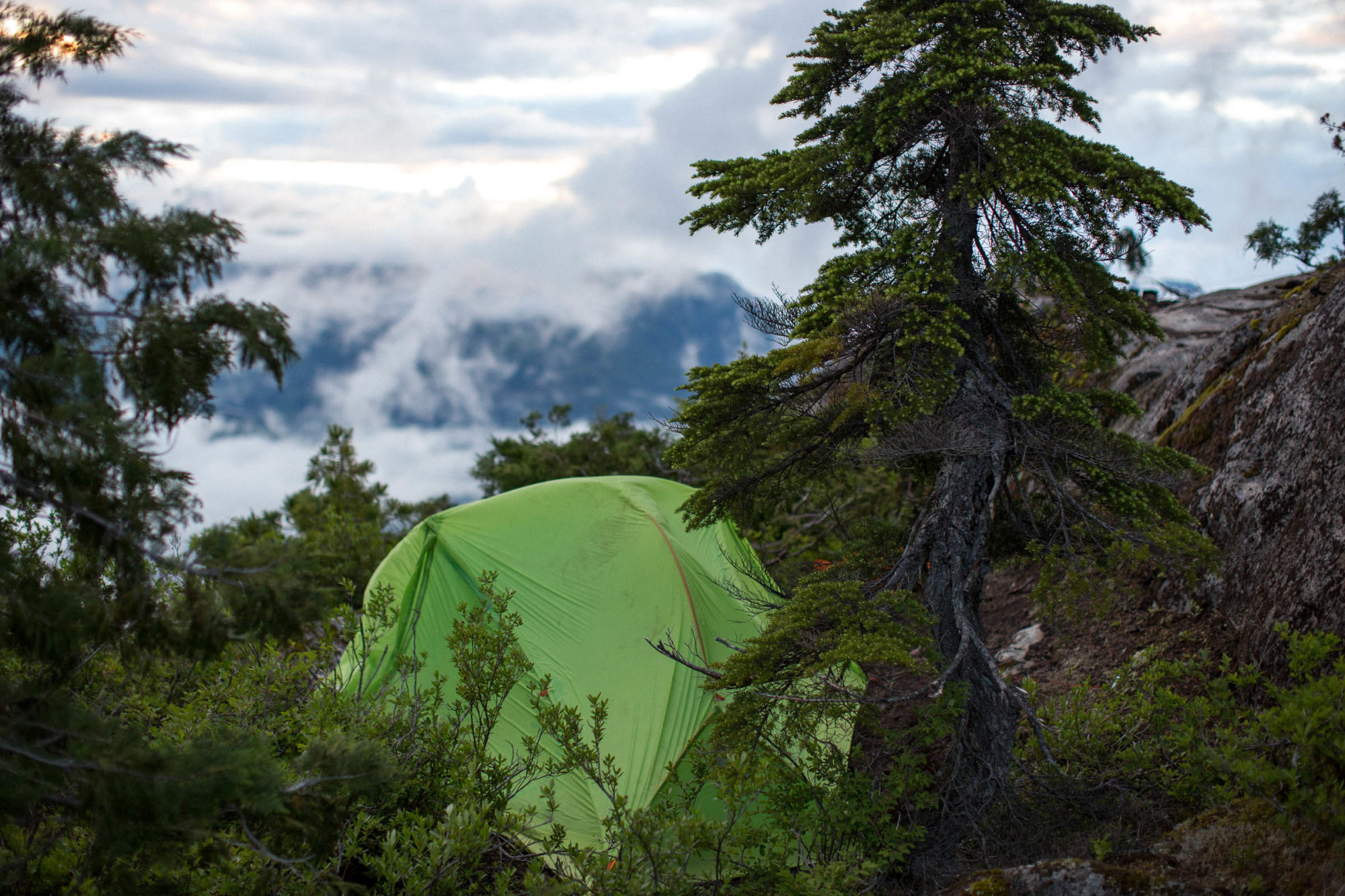
A two-pound, two-person tent is impressively lightweight, at least on paper. However, these types of shelters often use less durable fabrics, skimp on living space, and cost a small fortune. Although the Marmot Superalloy tent uses some lightweight fabrics that require a little extra care, it’s far from the most fragile tent on the market. What’s more, the overall design is fairly spacious and comfortable, considering its weight class. Weighing in at 2lb 5oz (tent, poles, and eight pegs), while still offering two doors, two vestibules, and a semi-freestanding design, the Marmot Superalloy is quite an accomplishment. With a retail price of $399 USD, it’s not as expensive as some comparable tents, such as the MSR Carbon Reflex 2, which weighs in at 2lb 3oz and costs $549.95. It’s also longer and taller than the Carbon Reflex 2, which makes it a better option for those taller than six feet. On paper, the Superalloy two-person tent looks pretty ideal as a bikepacking tent, so I was eager to get out on some trips to see how it worked in the real world.
It took some digging from a Marmot customer service rep, but we confirmed the Superalloy is constructed from a 15 denier ripstop nylon fly and a 20 denier ripstop polyester floor—both of which are treated with silicone and polyurethane. The tent comes seam sealed and waterproof, and includes stakes and guy lines for a proper setup. There is an optional 40 denier nylon groundsheet available for the Superalloy that costs an additional $50.
First Impressions and Setup
The Marmot Superalloy comes in a bag that’s big enough for a five-person family car camping tent, and I’m not sure why. I suppose it makes it easier to stuff the tent away quickly in the morning, but I ended up never using the stuff sack since I could pack it much smaller by just cramming it into a drybag on my handlebar. When packed this way, the tent packs down quite small, about the size of a watermelon, and if split between two riders—it would be hardly noticeable. The DAC Featherlite NFL Green poles, although not heavy, use segmented sections that are a little long when packed up and usually ended up being strapped on the outside of my handlebar bag setup on most occasions. Even on a large frame, the 49.5cm (19.5″) poles were too long to fit inside my frame bag, which is normally where I pack my tent poles.
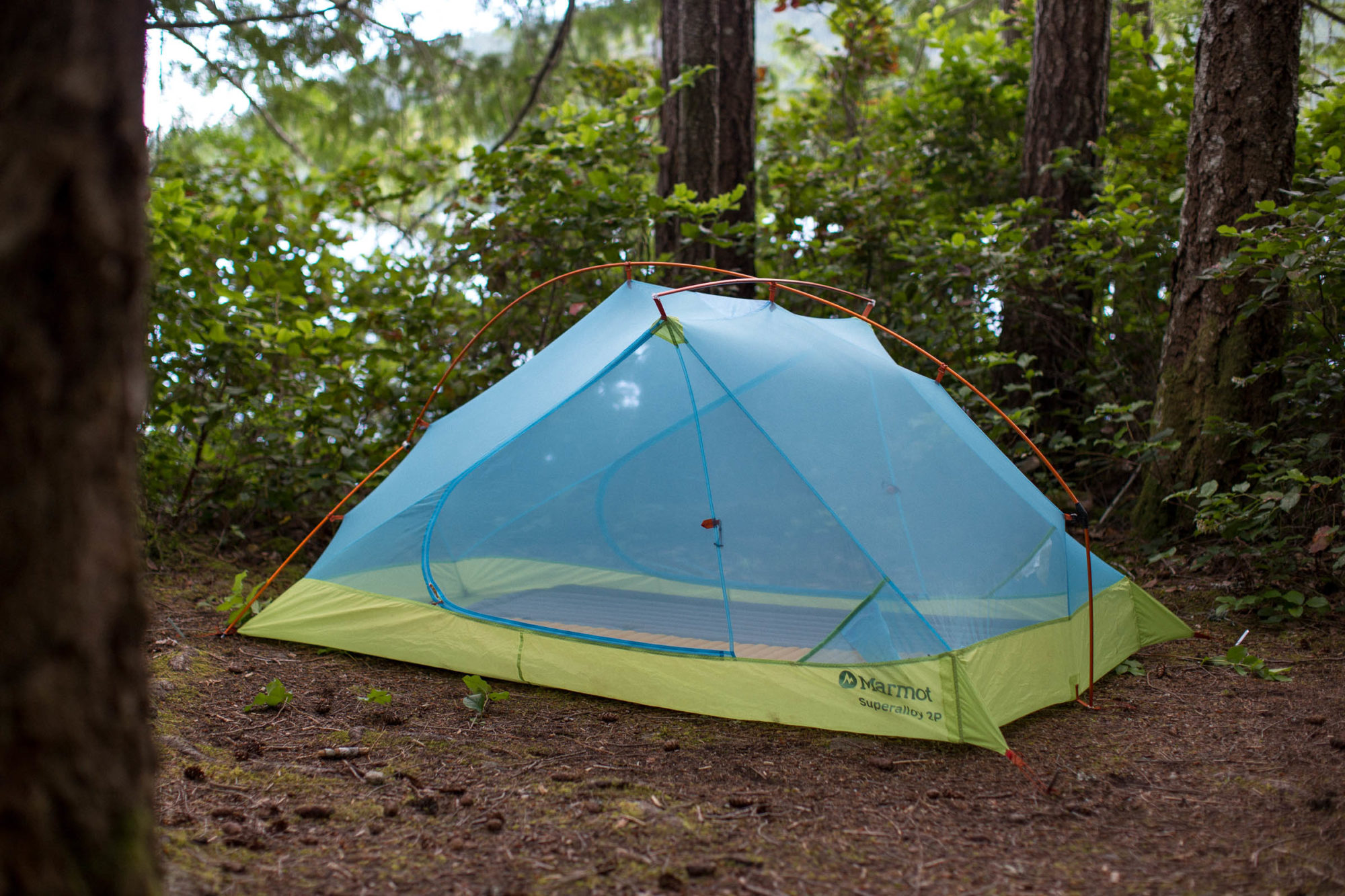
Setup is as straightforward as it gets. The Superalloy uses a similar pole setup as the MSR Carbon Reflex tent series—a Y-shaped pole with a separate overhead cross pole and nearly vertical walls to help create internal space. The body of the tent is almost entirely constructed from mesh, besides the bathtub-style floor, and the lightweight rainfly clips onto small loops of nylon cord at each corner of the tent. There are also small velcro tabs on the fly that can connect to the poles for some added stability, although I rarely used them. Due to its semi-freestanding design, the tent requires a minimum of two stakes at one end, but I found it really needed six or more stakes to achieve proper tension. The fly uses integrated lineloc adjusters to adjust the tension at all corners and doors, and there are plastic clips the secure the overhead cross pole to the fly.
Although the design is simple and seemingly well executed, I found the rainfly and body difficult to align correctly. It never affected the performance of the tent, but the perfectionist in me really wanted the seams and poles to line up, which I could never quite figure out. The rain fly fits tightly over the top of the tent, which isn’t a bad thing, but definitely makes it more difficult to line everything up at both ends. Thankfully Marmot included a bathtub-style floor, so even though the fly isn’t exactly perfect, there shouldn’t be any issues during a night out in a light storm.
Sleeping in the Superalloy
Although it has its quirks, the Superalloy is actually a great tent once you get inside. Small struts at the head end of the tent, paired with a small vertical pole segment, provide lots of head room. Even during a recent freak wind storm on an exposed ridge, the interior of the tent remained taught, roomy, and upright. The inside tapers slightly towards the bottom, but provides plenty of space for two sleeping pads with room to spare. I was also pleasantly surprised to be able to sit up fully inside the tent, which at 6’1″ isn’t always an option. At its tallest point the Superalloy offers 39″ of headroom, and tapers from 50″ wide to 42″ at the foot of the tent. At 87″ long, there should be enough room for those sitting around 7′ tall—not always easy to find in the world of ultralight tents.
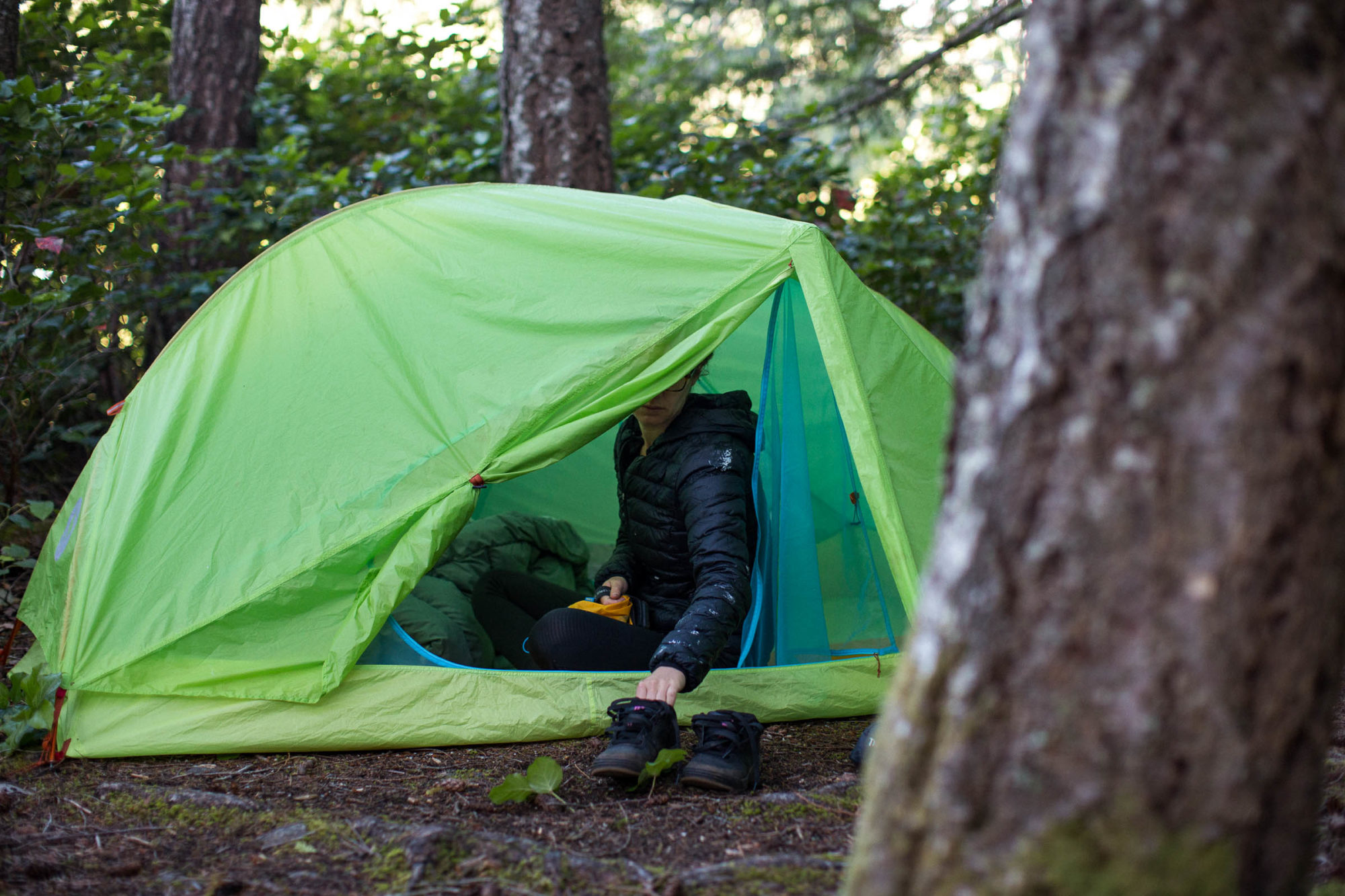
The little overhead headlamp pocket is a nice bonus, as are the two mesh pockets on either side of the tent. That said, the pockets are slightly awkward to use since they are angled down towards the floor, resulting in larger or heavier items sometimes falling out. I would have preferred to see a standard top-accessed rectangular pocket here.
Although no additional wear spots developed on the floor, I wouldn’t want to use the Superalloy tent without a groundsheet. In fact, I think once you get into this weight class they should be pretty much mandatory. I’ve recently been trying out a sheet of patio door shrink film as an ultralight ground sheet with great results, for those looking for something a little less bulky to bring bikepacking. And I know Lucas has been using the same sheet of Tyvek with various tents for close to a decade, so it’s certainly not the case that you always need to spring for the (often expensive) groundsheet that’s designed specifically for your tent. Elsewhere around the tent, the lightweight fabrics had a tendency to catch around the zippered doors, but with a little extra precaution, I had no major issues. This isn’t a tent that you want to use with reckless abandon, but it also doesn’t need to be babied.
Pros
- One of the lightest two-person, semi-freestanding tents available.
- Relatively affordable when compared to other ultralight tent options.
- Lots of interior space for two people and some small gear items.
- Lots of features, including two interior pockets, overhead lamp pocket, and two vestibules.
Cons
- Rain fly needs some tweaking for a better fit.
- Extremely lightweight fabrics need to be taken care of.
- Fluorescent colours make it less than stealthy and also bright in the morning.
- 49.5cm tent poles can be awkward to pack in a frame bag.
- Capacity: Two Person
- Material: Ripstop Nylon / Polester / Mesh
- Floor Area: 27.8 sq ft (2.6 sq m)
- Weight (as tested): 2lbs 5oz (1,048g)
- Place of Manufacture: Vietnam
- Price: $399 USD
- Manufacturer’s Details: Marmot.com
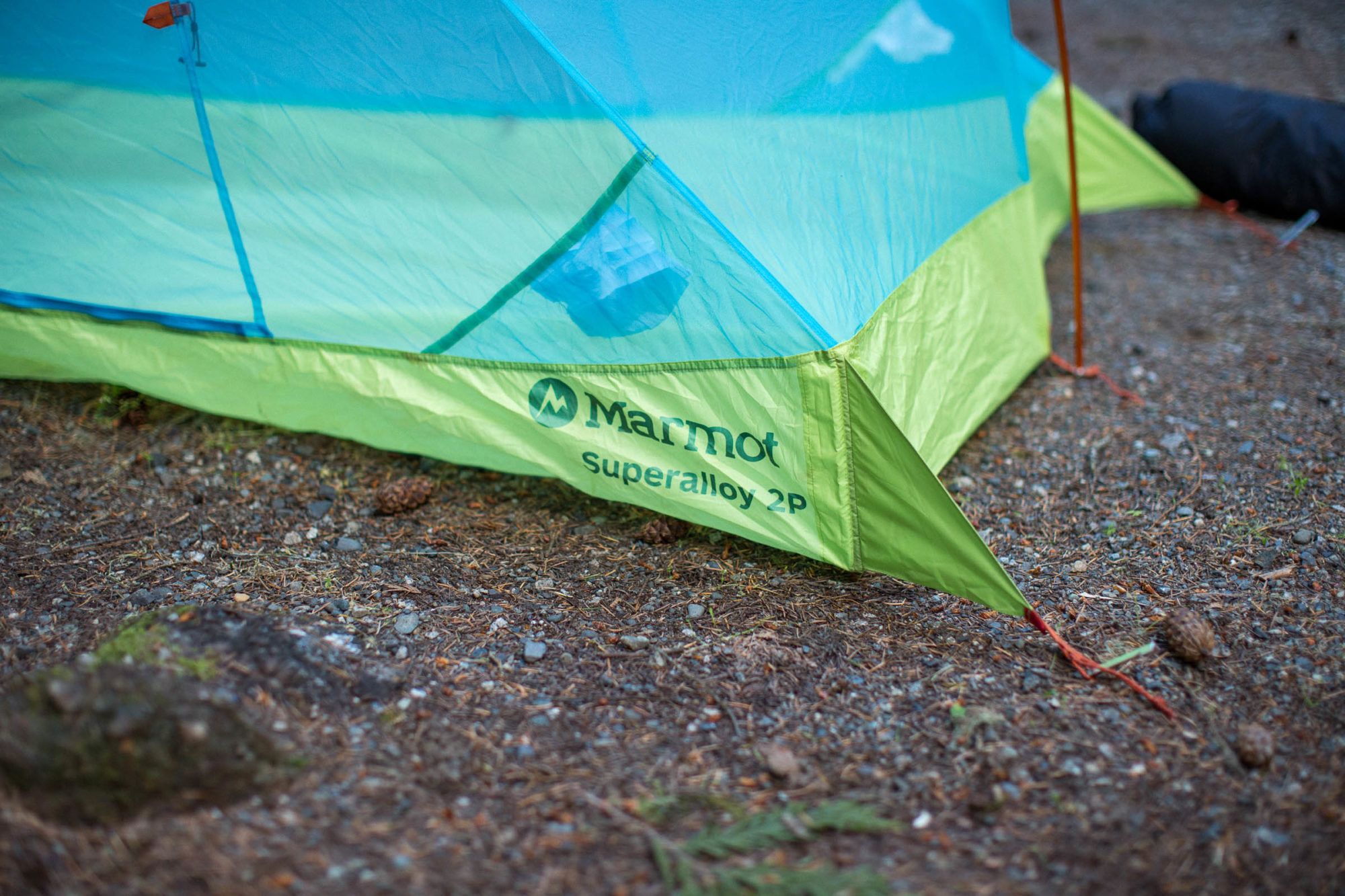
Wrap Up
Although the fluorescent green and blue colours are a little loud for me, I’ve otherwise been quite happy with the Marmot Superalloy Two-Person Tent. The oversized storage bag, long poles, and poorly fitting rain fly make it hard to love, but the main body and overall vision for the tent is close to exactly what I’m looking for in a two-person tent. I appreciate its semi-freestanding design and the amount of interior space it offers, and although it requires some extra precaution due to its lightweight construction, I think it’s a great option for a three-season bikepacking shelter. One can only hope that Marmot steps up their game with a redesign—as shorter poles and a better fitting rainfly could really set the Superalloy apart from the competition.
As mentioned earlier, it’s a real shame I was sent a used tent with holes in the floor because it made it harder to identity early wear points or to know what this tent went through to develop these holes. I haven’t been able to get any clear answers from Marmot, but it makes me think that buying the optional groundsheet or making a DIY option is a really good idea.
Please keep the conversation civil, constructive, and inclusive, or your comment will be removed.







